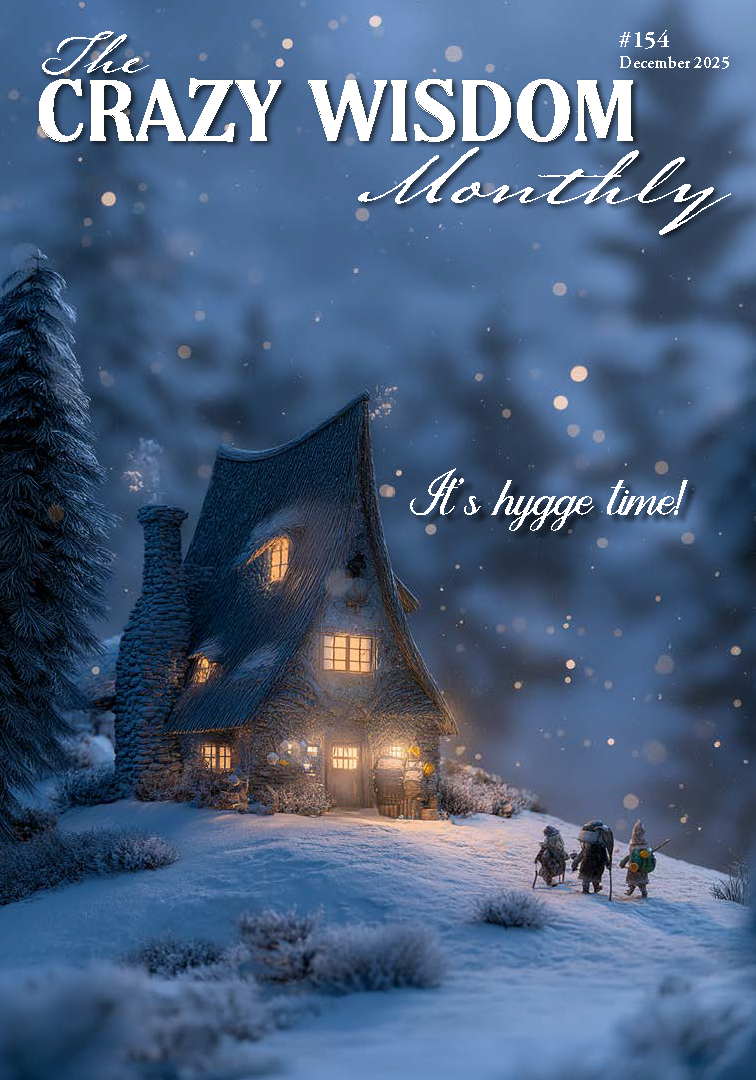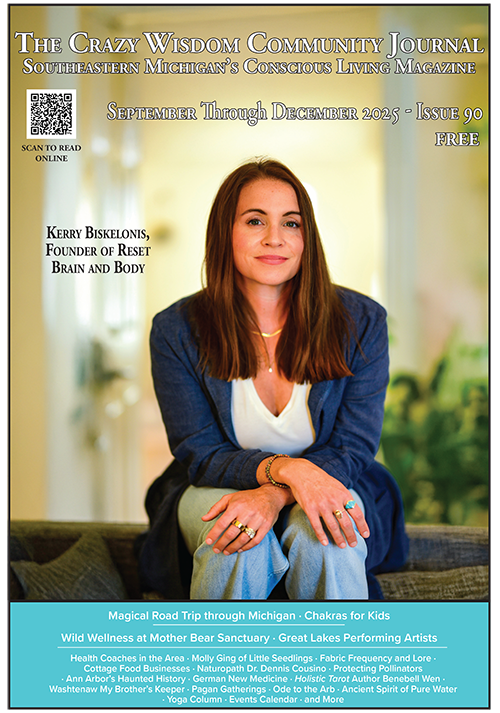By Mary F. Spence, PhD
(Mary is on the Board of Michigan Collaborative for Mindfulness in Education, a nonprofit dedicated to developing compassionate and mindful school communities throughout Michigan. She was featured in the most recent issue of Crazy Wisdom Journal.)
My nature is to wonder. About things, phenomenon, and people. I come from a long line of teachers who taught me well about the importance of reflection. From a young age, I was intensely curious about how what is happening now is a reflection of the big picture. Whether it’s by communing with others in deep conversation, a vigorous work out, playing with children, doing yoga, taking a walk in the forest, dancing, chanting, singing, reading or writing, playing with color in fabric, fiber or paint, I have long known that we encourage the presence of our best selves when we purposefully stop the whir of life regularly. I’ve listed some of my favorites, but there really are endless ways to open our hearts and mind to experience.
While spending time in spacious awareness, I found myself intrigued with the mindfulness movement. While I’m part of this movement and extremely gratified to see increased acceptance of mindfulness practices in education, I can’t help but wonder, how did things get so crazy in the first place — how did reflection and contemplation get the short shrift in our lives? Understanding the significant changes that have taken place in the world at large provides a context for understanding how to make schools better places to work, learn, and send our children to.
This blog entry highlights our need to purposefully “create space” in our lives again as an essential aspect of well-being. Steve Jobs’ goal to “invent things we didn’t even know we needed” was pivotal in the technology industry’s evolution and is now a fantastic part of this brave new world we are living in. But like most things that dramatically shift the landscape of our existence, we are often intrigued and excited by the wonderful things — and there are — that are now possible, without much realization of what we give up while gaining access. Sherry Turkle, Founder and Director of the MIT Initiative on Technology and Self, aptly notes that these technological advances come at a cost: “…. immersed in simulation, we are vulnerable. There are losses as well as gains. Older scientists describe a younger generation as “drunk with code.” …From both sides of a generational divide, there is anxiety that in simulation, something important is slipping away.”
Michael Spence, winner of the 2001 Nobel Memorial Prize in Economic Sciences speaks about this human-technology interface quite eloquently in The Next Convergence: “As humans, we first become aware of the world as it is. We see a snapshot of the world and the motion picture only much later. We seem to assume initially that the snapshot is a permanent state of affairs and not a moment in a journey with a constantly shifting landscape. Perhaps this is because fundamental change is, or seems, so slow. And perhaps also because change is hard to anticipate or to think in advance. Looking back is much easier.”
Turkle’s and Spence’s commentaries help to frame the dialogue about how to consider our essential human need for connection, pausing and creating space. While Turkle notes the need for caution about the fully simulated life, Spence articulates how our humanness is limited in our ability to absorb a ‘constantly shifting landscape,’ which has increased to a dizzying speed. Here mindfulness can exert meaningful influence on our societal trajectory.
Though people today often view the varied and endless activities that allow us to have more spaciousness as irrelevant, unproductive or superfluous, with some gentle encouragement, most everyone can remember how important taking a moment and doing so regularly, can be to their daily lives. Recently, Newbery Medal winner Neil Gaiman said his ideas for what to write about come from “daydreaming.” This is a space we all can find ourselves in, sometimes when we least expect it. Using mindfulness practices is purposefully creating a similar space to allow, consider, and notice what’s going on for us. By doing so, it provides some insulation from some of the driven-ness rampant in our society and the subsequent heightened level of reactivity that can ensue. Developing a mindful way of life is an excellent and efficient way to be more spacious about our present moment experience. Accessing our intuition can also remind us of our interconnectedness in a way that enhances our intentions to be more authentic not only for each other, but also for ourselves. Don’t believe me? Sit down with a small child you love to read one of their favorite books without distraction and you’ll remember :)
Even if you have a formal practice, please consider how you can embody this concept into the rhythm of your daily life again — the creating space in our lives rather than following the litany of items on every to-do list — perhaps including meditation. No wonder we are tired, burnt out, and lack compassion for one another. Similar to people working out for exercise, yet unwilling to climb a flight of stairs at work or walk to a nearby restaurant rather than drive, we can regularly do our practice to take the edge of our fast-paced life and return to being reactive, overwhelmed and judgmental in less than a heartbeat. In order to not replicate this common human error of attempting to harness the power of something good without truly integrating it into our lives for health, using the overarching concept of creating space within our lives and those of our students opens the doors WIDE for possibilities. There really are 1000n ways to create space!
Mary F. Spence, PhD, is a Clinical and Educational Psychologist in the Ann Arbor area who practices and teaches mindfulness in schools and within her private practice. She is on the Board of Michigan Collaborative for Mindfulness in Education, a non-profit dedicated to developing compassionate and mindful school communities throughout Michigan where all students thrive. You can reach her at mspence1111@gmail.com or through the MC4ME website www.mc4me.org or MC4ME Facebook https://www.facebook.com/mc4menpo/?ref=hl






































































































































































































Through the pandemic, many people have reached out to healers and wellness teachers for self-care techniques and help through crisis. One such teacher, Julie Woodward of Mindful Awakenings, seemingly does it all. She teaches yoga for resilience, mindfulness meditation, and leads nature immersion hikes that help us all re-anchor ourselves in the present moment and recharge through times of stress.